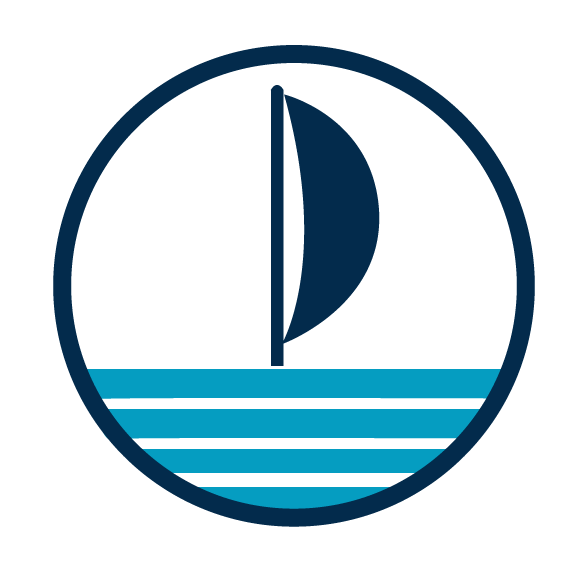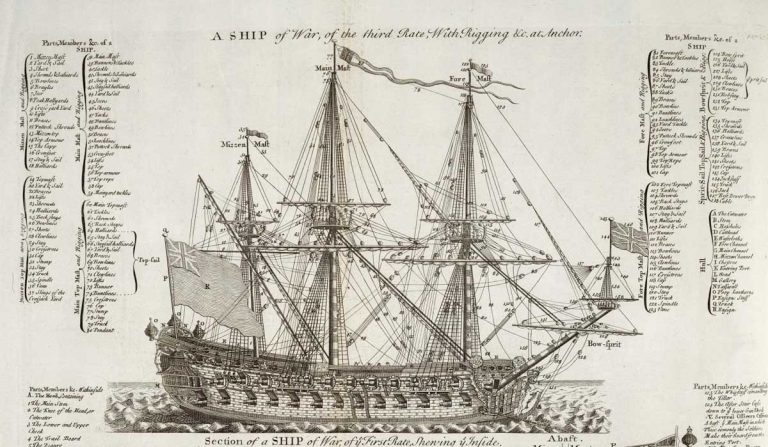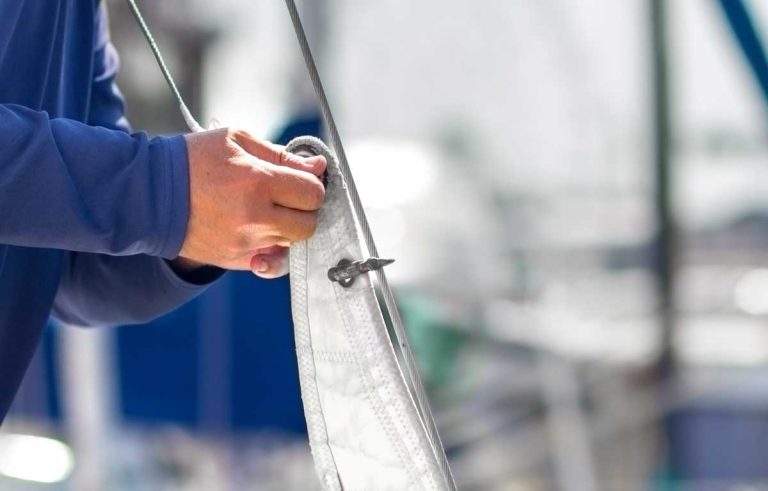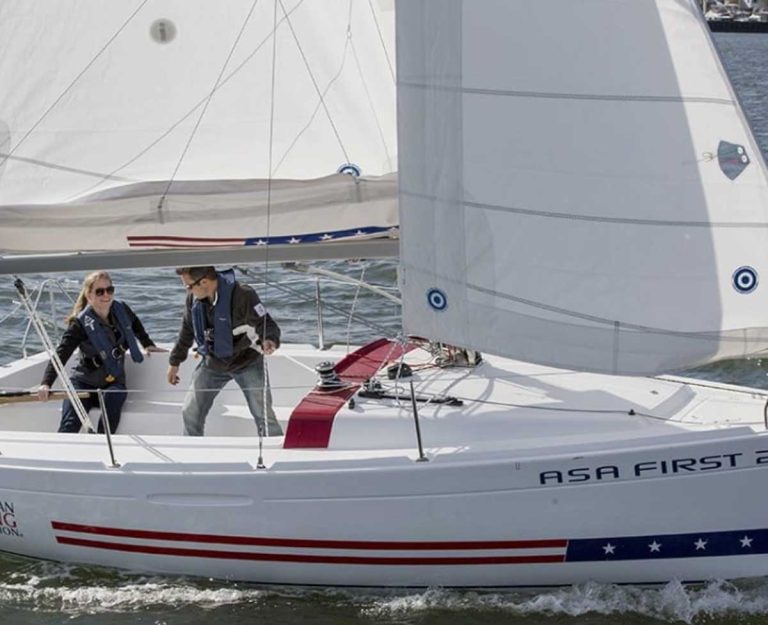How Modern Sailboats Work: Sails, Keels, and the Physics of Sailing
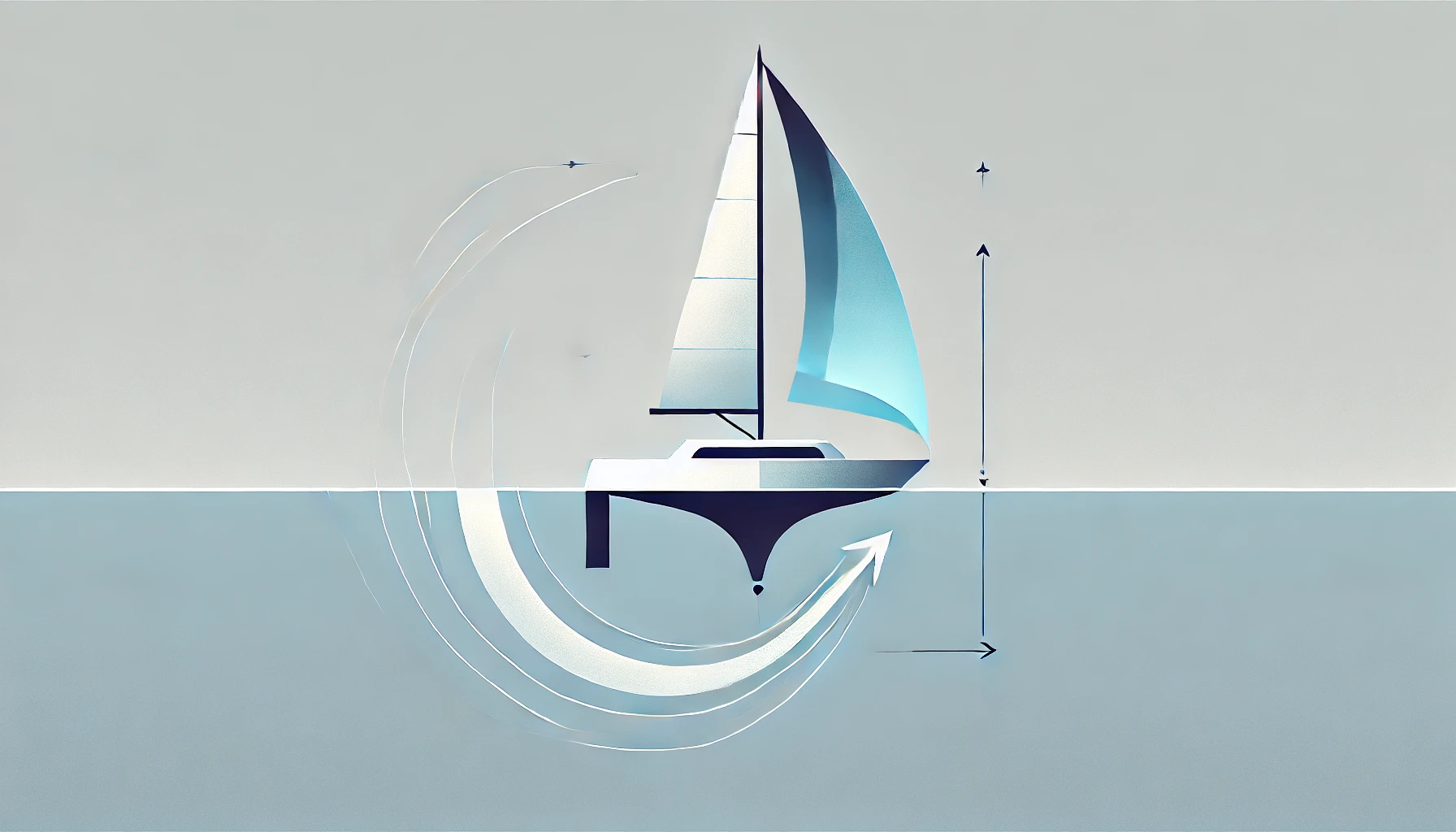
Modern sailboats harness the wind to move forward, but the mechanics of how that happens can seem like a mystery if you’re new to sailing. In particular, sailing upwind can seem like magic.
The key to understanding this lies in the sails’ design as an airfoil, similar to an airplane wing, and how the force generated by the sails works against the keel. This approach is quite different from the way square-rigged sails of the past operated, making modern sailboats more efficient and versatile.
Square-Rigged Sails vs. Airfoil Sails
In the age of sail, most large ships relied on square-rigged sails. These sails worked by capturing the wind directly, pushing the vessel forward much like a parachute catching air.
This method was effective when sailing downwind (with the wind directly behind the ship), but it limited a ship’s ability to sail efficiently in other wind directions. To sail upwind or at angles to the wind required a lot of tacking, and it was a slower, less maneuverable process.

Modern sailboats, by contrast, use airfoil sails that are curved and shaped to generate lift, similar to an airplane wing. This means that sailboats today can harness the wind not just from behind, but at angles, allowing for greater flexibility in navigation and speed.
The Modern Sail as an Airfoil
At first glance, you might think sails simply “catch” the wind and push the boat along, but it’s more nuanced. Modern sails are shaped like airfoils (think of the curved shape of an airplane wing). When the wind blows across this shape, it creates a pressure differential. Here’s how it works:
Windward and Leeward Pressure
Windward refers to the side facing the wind, and leeward is the side away from it. As the wind flows over the curved surface of the sail, the wind speed is different on each side. The wind travels faster on the leeward side, which creates lower pressure. On the windward side, where the wind travels more slowly, the pressure is higher.
Lift
This pressure difference generates a lift force, which is directed perpendicular to the wind and toward the leeward side. Much like how an airplane is lifted into the air, the boat is effectively “lifted” forward through the water.
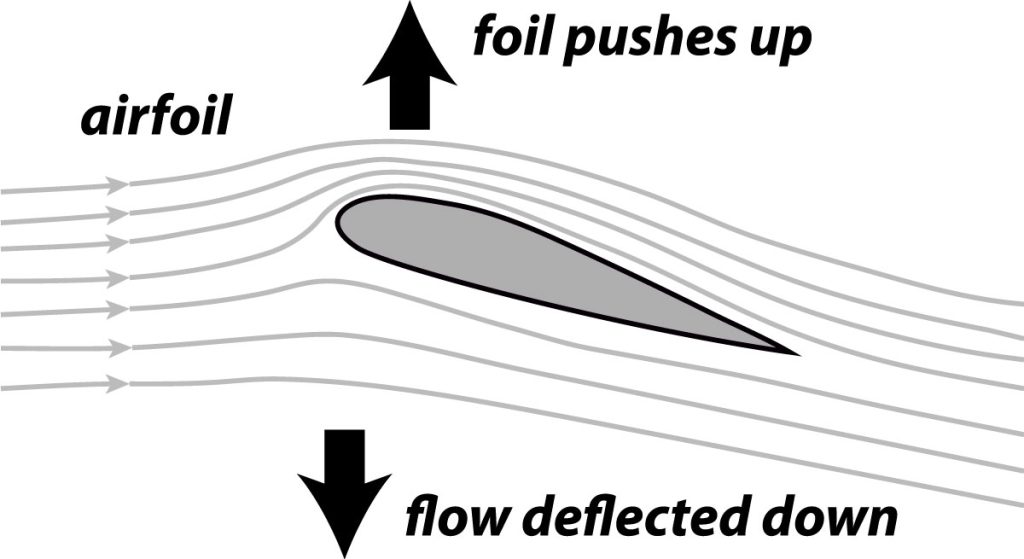
Keel: The Counterbalance
So, why doesn’t the sailboat simply slide sideways? This is where the keel comes into play. The keel is a fin-like structure that extends downward from the bottom of the boat, and it plays a crucial role:
- Hydrodynamic Force: Just as the sail uses the wind to generate lift, the keel and hull use the water flowing past it to generate its own force, called hydrodynamic lift. This force acts against the sideways pressure created by the wind in the sails, keeping the boat from drifting sideways.
- Balance and Forward Motion: The combination of the lift generated from wind moving over the sails and the counteracting hydrodynamic force from the keel and hull pushes the boat forward.
Putting it All Together
Imagine you’re sailing with the wind coming from the side but headed slightly upwind (a broad reach). The sails are trimmed so that they act as airfoils, generating lift. The wind tries to push the boat sideways, but the keel pushes back against the water. As a result, instead of moving sideways, the boat moves forward in a controlled, balanced motion.
Here is a simplified visual to help you understand how these forces come together to drive the boat forward:
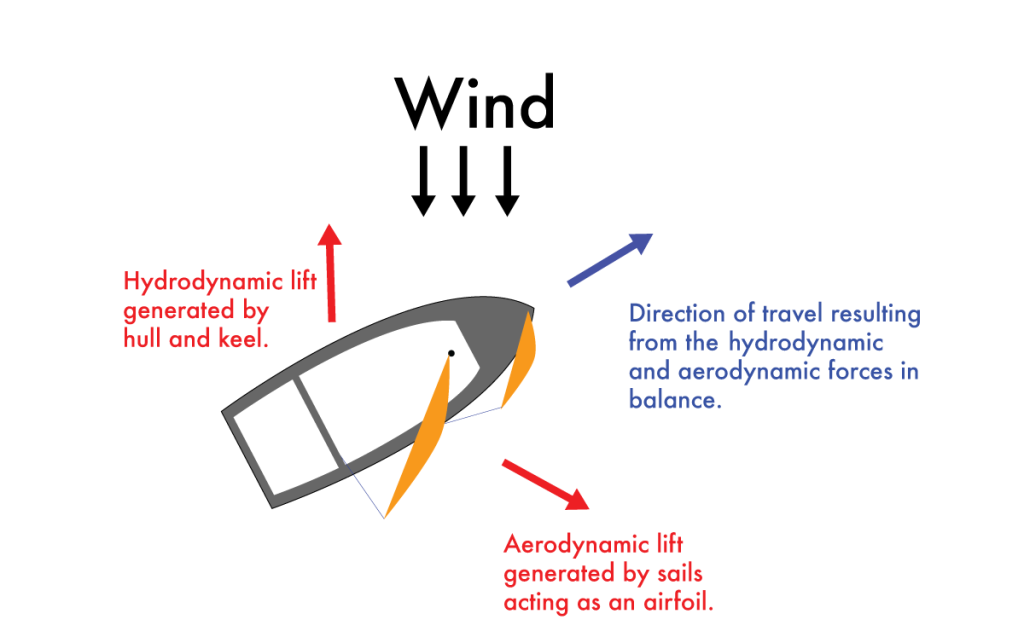
This stands in stark contrast to the old square-rigged ships, which relied heavily on the wind coming from behind for propulsion. The innovation of airfoil sails allows modern sailboats to move efficiently in a wider range of wind conditions, making them faster, more agile, and far more versatile.
Modern sailboats are a beautiful fusion of aerodynamic and hydrodynamic forces, allowing us to glide across the water efficiently and with control, even when the wind isn’t blowing directly from behind.
Trimming Sails to Maximize Aerodynamic Lift
Now that you understand the basics of how sails create aerodynamic lift, you may have already arrived at the next question: What angle of the sails relative to the wind generates the most lift?
When sailing upwind, modern airfoil sails should generally be trimmed at an angle of about 30 to 45 degrees to the wind, depending on the boat’s design and the sail type. This means that you will need to trim your sails – adjust their angle relative to the boat – as you change the boat’s direction relative to the wind.
As I explained above, this angle allows the sail to act like a wing, creating lift and driving the boat forward against the wind.
Here the chart of point of sails from our article on the subject as a reminder:

(Our points of sail guide for beginners goes into more detail the theory of sailing in various directions relative to the wind.)
You can see in the diagram that if you are sailing close hauled, as close to the wind as possible without entering the no sail zone and going into irons, your sails will be pulled in tightly to the boat with the main sheet. Since the boat will be heading upwind at around a 45 degree angle, the sails can be nearly parrallel to the boat to stay in the 30-40 degree angle to the wind for generating lift.
If you bear away from the wind a bit, to a close reach, you’ll need to ease the sails so that they stay in their ideal angle to the wind. The sails will swing out at a greater angle relative to the midline of the boat.
On a beam reach, when the wind is coming from directly abeam (the side of the boat), the sails should be trimmed to about 45 degrees (or more) to the wind. This allows the sails to capture the wind more directly and generate maximum speed while maintaining balance between lift and drag.
Sailing Downwind: Broad Reach and Run
When sailing downwind, the way sails function is quite different from when sailing upwind or on a beam reach. Rather than acting like an airfoil to generate lift, the sails primarily catch the wind, harnessing its direct push to propel the boat forward. This is why sailing downwind feels more like a passive ride, relying on the wind pushing against the sails, rather than the wind flowing over them to create lift.
Triming Sails on a Broad Reach
On a broad reach, the wind comes from behind but at an angle, generally between 90 and 160 degrees off the bow. The sails should be let out to around 60-90 degrees to the wind. You’re still getting a bit of lift from the sails, but the boat is moving mostly through direct wind push.
Sails need to be adjusted frequently to maintain proper trim as the wind angle shifts, maximizing efficiency without risking flapping or collapsing.
Trimming Sails on a Run
When sailing on a run, the wind is directly behind the boat (180 degrees off the bow), and the sails should be let out almost perpendicular to the boat—about 90 degrees ideally. (Note that the spreaders that hold the shrouds for the mast apart may prevent you from letting the sails out this far.)
You can also “wing” the sails out, where one sail is on one side and the other is on the opposite side (wing-on-wing) to maximize the sail area exposed to the wind.
Since the wind is pushing directly on the sails, the boat’s speed is slower compared to a broad reach, where some lift still helps with forward motion.
Jibe Risk
While sailing directly downwind on a run can be fast, it’s safer to avoid heading directly downwind. A small shift in wind direction or a steering mistake can lead to an accidental jibe, where the boom swings violently across the boat. This can damage equipment or injure crew. Sailing at an angle, such as on a broad reach, minimizes this risk and allows for better control.
